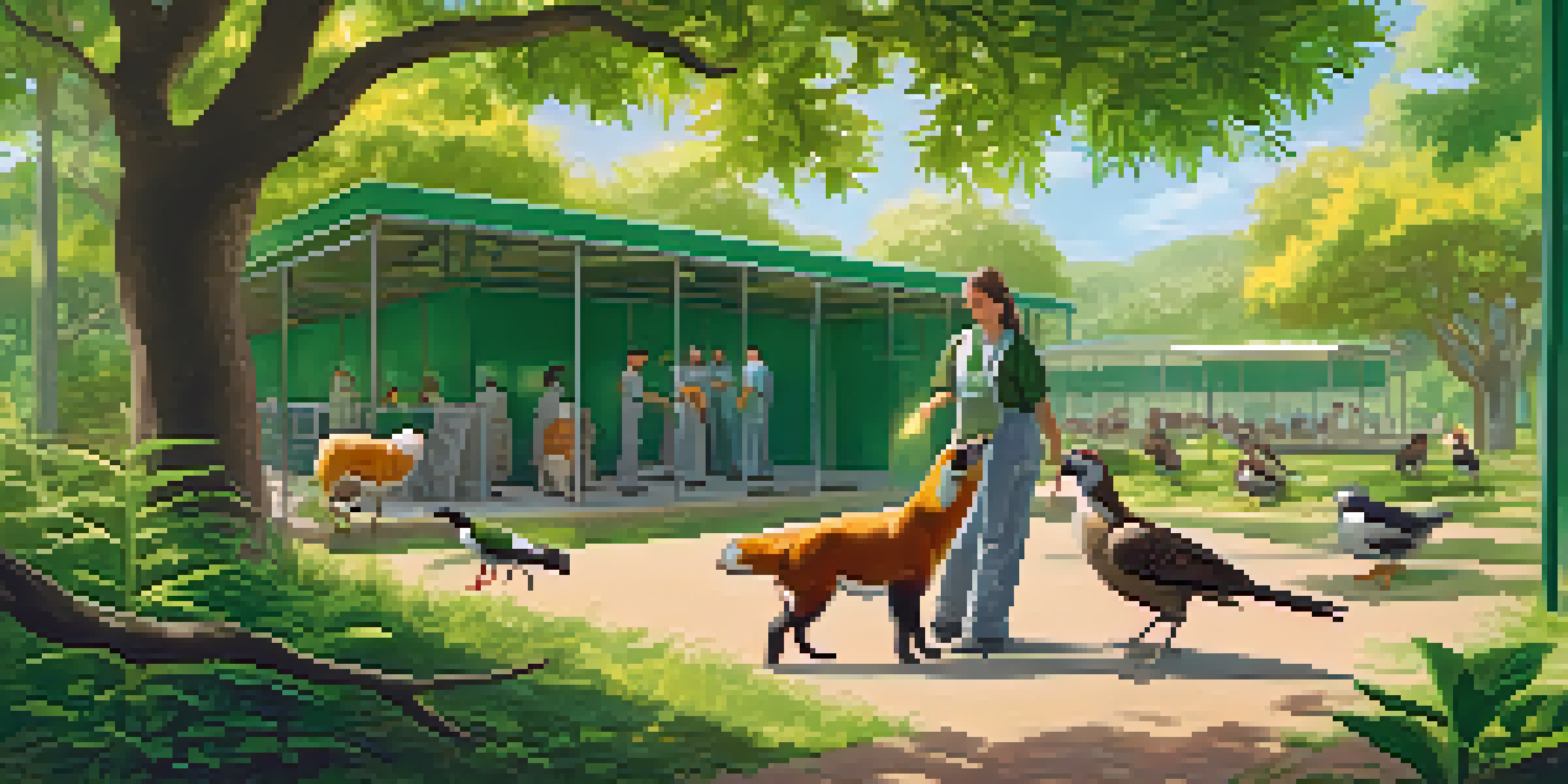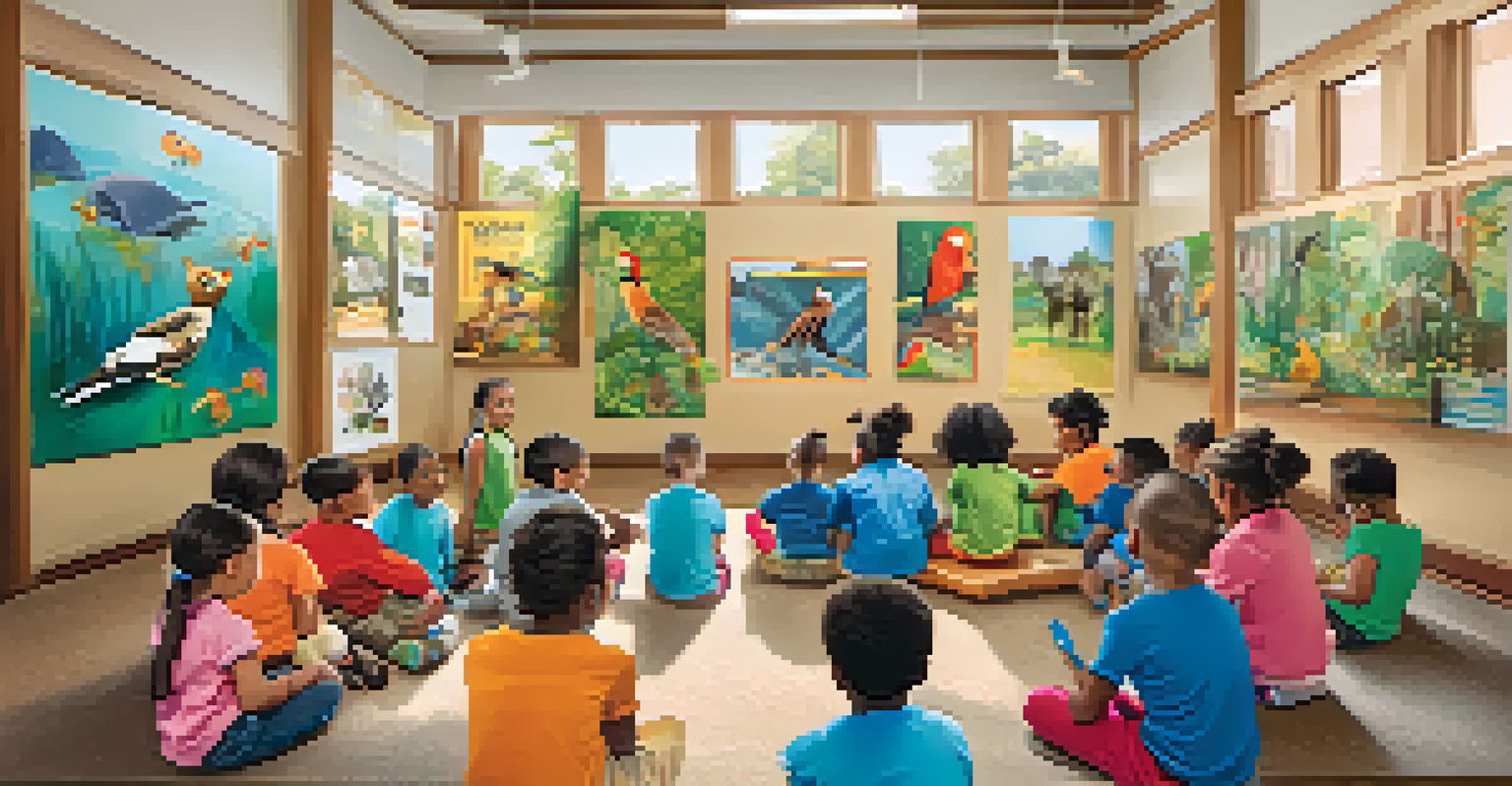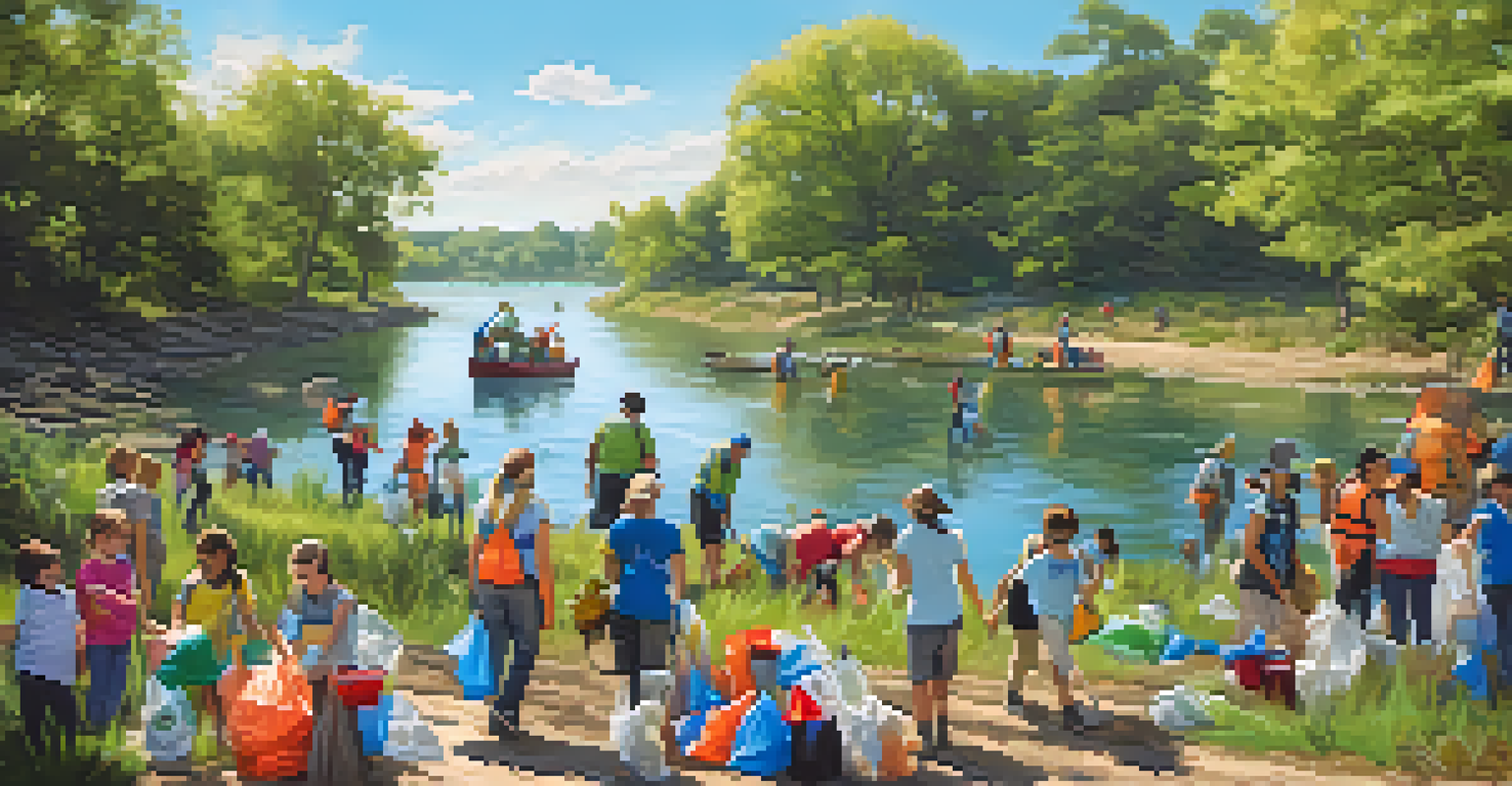Importance of Community Engagement in Wildlife Rehabilitation

Understanding Wildlife Rehabilitation and Its Challenges
Wildlife rehabilitation is the process of caring for injured, sick, or orphaned wild animals with the goal of returning them to their natural habitat. This vital work helps maintain biodiversity and supports local ecosystems, but it comes with its own set of challenges. Rehabilitation centers often face limited resources, skilled personnel, and public awareness about the importance of their work.
The greatness of a nation and its moral progress can be judged by the way its animals are treated.
Moreover, wildlife rehabilitators frequently encounter animals that have been injured due to human activities, highlighting an urgent need for community education. Without understanding, people may inadvertently contribute to the problem through littering, habitat destruction, or even illegal wildlife trade. Thus, it becomes increasingly important to engage the community in wildlife conservation efforts.
By fostering a better understanding of the challenges faced in this field, we can encourage community involvement, which is crucial for the success of rehabilitation programs. When local residents recognize the importance of wildlife and the role they can play, it creates a supportive environment for rehabilitators.
The Role of Community Engagement in Rehabilitation Success
Community engagement plays a pivotal role in the success of wildlife rehabilitation efforts. When individuals and organizations come together, they can create a broader network of support that helps raise awareness and funds for rehabilitation centers. This collective effort can lead to increased resources, such as donations of time, money, and supplies, which are essential for the care of injured wildlife.

Moreover, community involvement fosters a sense of ownership among residents regarding local wildlife conservation. When people feel connected to their local wildlife, they're more likely to take action, whether it's reporting injured animals or participating in cleanup drives. This sense of belonging helps create a culture of conservation that benefits both wildlife and the community.
Community Engagement Drives Success
Active community involvement is crucial for the success of wildlife rehabilitation efforts, providing essential support and resources.
Successful engagement can also lead to partnerships with local schools, businesses, and civic organizations, creating educational programs that promote wildlife understanding and rehabilitation practices. These collaborative efforts can enhance community knowledge and inspire future generations to care for their environment.
Building Awareness Through Educational Programs
Educational programs are a powerful tool in fostering community engagement in wildlife rehabilitation. By hosting workshops, school visits, and community events, rehabilitation centers can share valuable information about local wildlife and conservation efforts. These programs help demystify the rehabilitation process and show community members how they can contribute.
We won't have a society if we destroy the environment.
For instance, hands-on activities like wildlife tracking or habitat restoration projects can ignite a passion for wildlife conservation in participants. These experiences not only provide practical knowledge but also create memorable connections with nature. When people see the impact of their actions, they are more likely to become advocates for wildlife protection.
Additionally, social media campaigns and online resources can amplify educational efforts, reaching a wider audience. By sharing success stories, photos, and updates about rehabilitation efforts, organizations can engage the community and encourage them to get involved in local initiatives.
Volunteering: A Pathway to Community Involvement
Volunteering at wildlife rehabilitation centers offers individuals a hands-on approach to support local wildlife. Many centers rely on volunteers for various tasks, including animal care, cleaning, and community outreach. This involvement not only assists the centers but also provides volunteers with valuable experiences and skills.
For many, volunteering cultivates a deeper appreciation for wildlife and the challenges they face. It allows individuals to witness the rehabilitation process firsthand, fostering empathy and understanding. This emotional connection often translates into a lifelong commitment to wildlife conservation.
Education Fosters Conservation Awareness
Educational programs help demystify wildlife rehabilitation and inspire community members to participate in conservation efforts.
Furthermore, volunteers often become advocates, sharing their experiences and knowledge with friends and family. As they spread awareness, they help build a community that values and protects local wildlife, creating a ripple effect of positive change.
Fostering Partnerships with Local Organizations
Creating partnerships with local organizations is a strategic approach to enhance community engagement in wildlife rehabilitation. Collaborating with schools, businesses, and environmental groups can amplify outreach efforts and provide additional resources. For example, a local school might partner with a rehabilitation center for a project focused on animal care, engaging students in real-world conservation efforts.
Such partnerships can also lead to joint fundraising initiatives, community events, and awareness campaigns that highlight the importance of wildlife rehabilitation. By working together, organizations can pool their resources and expertise, creating a more significant impact than they could achieve alone.
Moreover, these collaborations often result in shared knowledge and learning opportunities, benefiting both wildlife and the community. When various sectors come together for a common cause, it strengthens community ties and enhances collective responsibility towards wildlife conservation.
The Impact of Local Advocacy on Wildlife Rehabilitation
Local advocacy plays a crucial role in shaping policies that affect wildlife rehabilitation and conservation. Engaging community members to advocate for wildlife protection can lead to meaningful changes at the local and regional levels. When citizens voice their concerns about habitat destruction or illegal wildlife trade, they can influence decision-makers to prioritize wildlife conservation efforts.
Moreover, grassroots movements often bring attention to issues that may otherwise go unnoticed. By mobilizing community members, advocates can rally support for initiatives that benefit wildlife, such as creating protected areas or improving local ordinances related to wildlife care. This grassroots support is essential for the sustainability of wildlife rehabilitation programs.
Advocacy Empowers Local Action
Local advocacy plays a vital role in influencing wildlife protection policies and ensuring the sustainability of rehabilitation programs.
Advocacy also empowers individuals, giving them a sense of agency in protecting their local environment. When communities unite for a cause, it creates a powerful force that can lead to lasting change, ensuring that wildlife rehabilitation centers can continue their vital work.
Celebrating Community Success Stories in Wildlife Rehabilitation
Celebrating success stories in wildlife rehabilitation is a fantastic way to inspire continued community engagement. Highlighting instances where injured animals have been successfully rehabilitated and returned to the wild showcases the positive impact of collective efforts. These stories can serve as powerful reminders of the difference that community involvement can make.
Sharing these achievements through newsletters, social media, and local events helps build a sense of pride within the community. When individuals see the tangible results of their contributions, it reinforces the idea that they are an integral part of the solution. This recognition can motivate more people to get involved, leading to a cycle of engagement and support.

Furthermore, success stories can educate the community about the challenges wildlife faces and the importance of ongoing conservation efforts. By celebrating these moments, we not only honor the hard work of rehabilitation centers but also inspire future generations to continue advocating for wildlife protection.